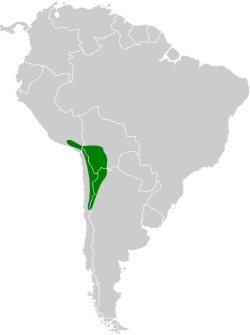| Phrygilus | |
|---|---|
 | |
| Patagonian sierra finch (Phrygilus patagonicus) | |
| Scientific classification | |
| Domain: | Eukaryota |
| Kingdom: | Animalia |
| Phylum: | Chordata |
| Class: | Aves |
| Order: | Passeriformes |
| Family: | Thraupidae |
| Genus: | Phrygilus Cabanis, 1844 |
| Type species | |
| Fringilla gayi Gervais, 1834 | |
| Species | |
See text | |
Phrygilus is a genus of mainly Andean seed-eating tanagers commonly known as sierra finches. Phrygilos means finch in Ancient Greek. Traditionally classified in the bunting and American sparrow family Emberizidae, more recent studies have shown them to belong in the Thraupidae. [1]







